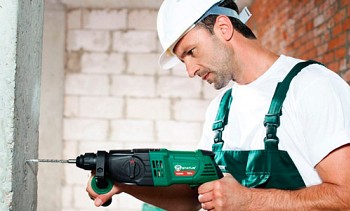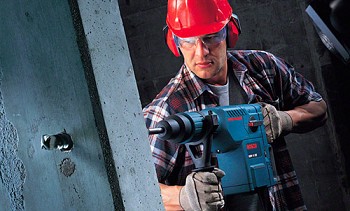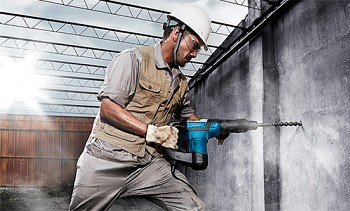Which rotary hammer is best to buy for work
You can drill several holes in a brick wall with a conventional impact drill, but if you need to regularly perform such processes on a construction site or during repair, you need a more powerful tool. To figure out which hammer drill is best to buy for the job, check out the tips below that give specific parameters as a guide. The subsequent rating of the best punchers, taking into account the functionality of the products and customer reviews, will help make the final choice.

The selection of goods was carried out on the basis of reviews, opinions and ratings of users posted on various resources on the Internet. All information is taken from public sources. We do not cooperate with manufacturers and trademarks and do not call for the purchase of certain products. The article is for informational purposes only.
Which rotary hammer to choose for work
The price of a punch varies from 6,000 to 50,000 rubles. If you buy too cheap, then it can not cope in terms of power or have a short resource. Too expensive, on the contrary, often contains overestimated parameters that are not needed, but you will have to overpay for them.
The main criteria for choosing a professional hammer drill are:
- continuity of work;
- power;
- wear resistance.
Here are specific tips on tool features to help you see which punch you want to work in a variety of conditions.
Drill Mount Type
There are 5 types of snap fixation in the drill chuck, each of which has its advantages and disadvantages. The choice depends on the upcoming daily tasks for which the tool is purchased.
1. SDS-Plus
The most common type of drill attachment on sale. It is found in light and middle class models. Such equipment is designed to create holes in concrete and masonry with a diameter of 12-25 mm.

Shank snap SDS Plus.
The shank is clamped at a depth of 40 mm into the cartridge. Two grooves are provided on the sides of the drill, into which the balls of the clamping mechanism enter. Drill installation is carried out in one touch - quickly and conveniently. The contact area of the mount is 75 mm². The diameter of the working part of the drill can be 12-32 mm, and the shank always remains with a cross section of 10 mm. These are optimal indicators for drilling and drilling (with impact). But starting from a thickness of 18 mm, the drill begins to “walk” a bit, which reduces the accuracy of the holes made.
Strobing with such a cartridge does not need to be performed so often, since the small contact area of the shank contributes to the accelerated wear of the balls and can even break off the equipment. If you need to drill holes up to 18 mm in diameter and sometimes ditch walls, then SDS-Plus will be the best option.
2. SDS-Max
This type is used only in large perforators designed for high impact loads. The cross-section of the shank is 18 mm, and fastening in the cartridge occurs immediately in five grooves with spacers.The total contact area of the stoppers is 389 mm², which makes it possible to better hold the equipment. Thanks to this equipment, it will be possible to punch holes up to 52 mm in diameter. This is convenient for quickly laying pipes and cables through wall partitions.
But the SDS-Max shank has one drawback - punchers with such cartridges are designed only for chiselling and drilling. If you need to drill regularly, either look for a different type of mount, or purchase a drill separately.

SDS-Max snap shank.
3. SDS-Quick
This standard was developed by Bosch and is used in home rock drill models. Fixing snap is carried out by a hexagonal boss. Drills can be used for shock mode and conventional drilling. The advantage of the system is a quick change of equipment. If you often have to change it, then SDS-Quick will save time. But this type should be chosen in the case of drilling holes up to 12 mm in diameter, when in a day they need to be done up to 20-30 pcs.

SDS Quick snap-in.
4. SDS-Top
Another Bosch development used to increase retention. The shank is included in the cartridge by 7 cm. The cross section of the shank itself is slightly larger than in SDS +, and is 14 mm. For fixing, two closed and two open grooves are used. As a result, this type allows you to drill holes up to 70 mm in diameter. Powerful, reliable, but it can be difficult to select a snap.

SDS-Top tool shank.
5. Hex
Hexagonal shank shape with a similar chuck. It is rare in network punchers - more represented in pneumatic models (jackhammers). The design is perfectly fixed, withstands loads with rotation and chiselling, designed for tool diameters up to 50 mm. A universal option, but such a tool is difficult to find in the market. It will be even more difficult to pick up the Boers to it.

HEX tool shank.
Type of percussion mechanism
When choosing a hammer drill for work, it is important to understand the types of percussion mechanism.
Network models can be equipped with the following types of percussion mechanism:
- Electromechanical
- Pneumatic
Electromechanical Impact Mechanism
This type of shock mechanism is based on the so-called “drunk bearing”. It receives rotation energy from an electric motor, but in addition to its own axial torsion, it performs transverse-vibrational movements. Thanks to this, constant strikes are made in the firing pin transmitted to the cartridge. Such a system is simple and reliable. It is common on rotary hammers of the light and middle class. Suitable for regular drilling and periodic drilling operations.
The principle of operation of the electromechanical shock mechanism, see the video:
Pneumatic hammer
It implies the transfer of energy from an electric motor to a crankshaft. The latter is attached to a connecting rod, at the end of which a piston is located. Moving in a cylindrical tube, the piston creates air pressure transmitted to the firing pin through a free second piston. This principle is implemented only on professional rotary hammers designed for everyday chiselling (shredding walls for wiring, dismantling wall partitions, etc.).
The principle of operation of the pneumatic impact mechanism, see the video:
Punch power and impact energy
For regular drilling at a shallow depth of 40-100 mm, hammer drills with a power of 500-700 watts are chosen. If you need to fix anchors and dowels with a length of 110-600 mm, then more powerful models with characteristics of 800-2000 W will be required.
The performance of a hammer drill also depends on the impact energy. Actually, it doesn’t matter how much the operator presses the tool - the efficiency does not increase, and some internal parts even deteriorate. Impact energy is an independent value, which in professional models should be 8-27 J. The lower this parameter, the longer each hole will have to go through, and the level of equipment wear will be higher.
Anti-vibration protection
Due to strong fluctuations in the instrument, tunnel syndrome can develop from frequent work with it.This is an occupational disease for most workers who have to use the machine every day for many hours. Depending on how often you plan to use the hammer drill at work, pay attention to the type of vibration protection.
Passive anti-vibration protection
Presented in the form of rubber pads on the handles and tool body. Seals in other parts may be present. Their goal is to make holding the punch more convenient and only slightly relieve fatigue. Suitable for load compensation during periodic use of the tool.

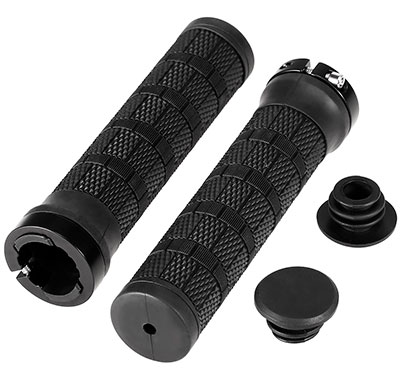
Active anti-vibration protection
Consists of internal counterweights with springs that absorb vibrations. The handle of the device is attached to the body on hinges that prevent the transmission of vibration from the percussion mechanism to the operator. Hands get tired less at the end of the day, overall productivity improves.
See how active vibration protection works:
If you have to use a rotary hammer for 3-6 hours every day, then do not save on high-quality vibration protection.
Spindle speed and number of strokes
Rotation of the punch is necessary to remove crushed material from the hole. If you plan to drill often, then select a value of 1500-2000 rpm. On the other hand, high speeds are not required for drilling. Here, on the contrary, the higher the rotation speed, the faster the tool wears out, so for such an activity, buy professional rotary hammers with an index of 1000 rpm and less.
In addition to power and tapping strength, performance is affected by the number of perfect beats per minute. The more of them, the faster it will turn out to make a hole of the required depth in a solid material. For professional activities, the optimal indicator is 4500-6000 beats / min. For periodic use, 3000-4000 bpm is sufficient.
The difference between brush and electronic reverse
In electric rotary hammers, reverse is often provided. This allows you to start the rotation of the cartridge in the opposite direction, which is convenient for extracting equipment from the material. The reverse is of two types: electronic and turning brushes.
In the first case, the brushes remain attached to the armature in the same position, and by pressing a button the operator changes the supply current (polarity) to the opposite. In this case, the engine starts to rotate in the opposite direction. But such a scheme helps to reduce engine power (it can be difficult to unscrew tightly fastened long equipment) and the graphite elements of the chain are erased faster.
In the second case, reverse rotation is possible due to the mechanical displacement of the brushes by 60 degrees, by acting on a lever located on the side of the punch case. This allows you to save motor power and saves the resource of graphite elements. Of course, such a system is more expensive, but for professional activities you should definitely choose it.

Brush reverse.
What to choose: cordless or network tool?
If we talk about power and performance, models with a battery are in no way inferior to network ones, and are able to cope with complex tasks. When choosing a hammer drill for work, you need to consider the place where the task is performed. If this is a small room with sockets, then it is better to buy a power drill. You do not have to worry about recharging, and the presence of an extension cord will allow you to freely move along the wall.
Cordless rotary hammer is convenient for its autonomy. Such a model is useful when working on a remote object without electricity, or when actions have to be performed at altitude. The absence of trailing wires facilitates frequent climbing on a stepladder and does not burden the weight of the tool. It also gives the operator increased maneuverability, allowing you to quickly move along a long fence or move from room to room.
Such a tool is suitable for installers of doors, windows, air conditioners, ventilation systems and other masters of mobile teams traveling to objects. To use a hammer drill with a battery all day long, it’s best to buy a spare battery right away. While work is underway with one battery, the second can be recharged.
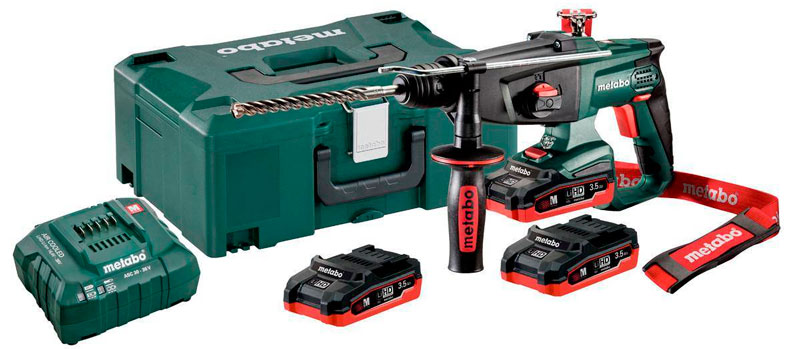
The best mid-range rotary hammers
Having studied the main characteristics and noting specific parameters for various activities, we turn to the goods on the market. Here are the TOP punchers for work, which collected popular, among buyers, middle-class models. They are more affordable and suitable for home repairs or field trips.
Bosch GBH 2-28
The first place in the rating is given to the Bosch rock drill, assembled directly in Germany. It has a power of 880 watts and makes hits in the amount of 4000 per minute. The speed is adjustable from 0 to 900. The kit includes a drill chuck that extends the functionality. The device operates in three modes. The impact force is 3.2 J. The drill is fastened with an SDS + cartridge. The hammer drill is comfortable to hold thanks to the Soft Grip anti-slip pads. A 4 m long wire increases operator mobility.


Pros of Bosch GBH 2-28
- The ball mount of the cable prevents it from twisting.
- Soft linings for a comfortable grip.
- The maximum permitted tool diameter is 28 mm.
- Rubberized gear housing.
- The reverse is carried out by turning the brushes.
- There is a safety clutch that saves the gearbox when the drill jams.

Cons Bosch GBH 2-28
- From under the impeller air blows into the face of the operator.
- Drill chuck does not tighten the drill bit.
- High cost of SDS + cartridge in case of repair.
- It weighs 3 kg.
Conclusion. We recommend paying attention to the model for those who have to make holes to insert pipes or cables into the wall. An active Viration Control system is implemented here, which reduces the burden on the hands. According to the reviews of the masters, it really works, and the tool is comfortable to demolish a brick or perform long-term drilling.
Makita HR 2475
The model has a power of 780 W and rotates the spindle up to 1100 rpm, making impacts in the amount of 4500. The force of impact is 2.7 J. The equipment is held by the SDS-Plus cartridge. The maximum diameter of the drill is 24 mm. The use of crowns on concrete with a width of 65 mm is allowed. The rotary hammer supports three operating modes. An electronic reverse with a change in the polarity of carbon brushes is provided.


Pros of Makita HR 2475
- The thickness passes into two expanded clay blocks with a drill, with a diameter of 20 mm in 30 seconds.
- Durable carrying case withstands frequent transportation.
- No strong recoil when chiseling.
- Long wire 4 m.
- A safety clutch protects the gearbox and the operator.

Cons Makita HR 2475
- Electronic reverse - brushes wear out quickly.
- No drill chuck included.
- In the cold, the cable quickly becomes oak and interferes.
- When biting, the cartridge revolves around the snap.
Conclusion. Many users in the reviews note the convenience of gripping this punch. The D-shaped handle makes it easy to hold the model and guide it into the work area. Such a handle is practical for working in all spatial positions (especially on the ceiling), it is easy to rest against and accurately equip a snap. You need to drill often and accurately - choose this option.
DeWALT D 25263 K
The model has a power of 900 W and a shock force of 3 J. At the same time, the device is well suited both for serious tasks (chiselling, drilling) and for drilling - the spindle speed here is 1450 revolutions and is electronically regulated. In concrete, it will turn out to wield a crown with a diameter of up to 65 mm. The SDS-Plus shank reliably clamps drills with a cross section up to 28 mm. The reverse by turning the brushes is more durable.


Pros of DeWALT D 25263 K
- High power for productivity.
- Excellent vibration protection, reducing fatigue.
- Convenient form of the main and auxiliary handle.
- Equipment quickly enters concrete and brick.
- The backlight on the chassis makes it easier to work in low ambient light.

Cons DeWALT D 25263 K
- Sometimes the spatula “spits out”.
- Drill chuck is not included.
- The base case does not fit a lot of Boers.
- Short wire 2.5 m.
- There is no hook for hanging the tool on the stepladder.
Conclusion. This is the best punch for frequent chiselling (seams, grooves for wiring, pipes, etc.). To do this, he has a shock frequency of 5350 per minute.In the reviews, the goods are praised for the vibration damping system, which does not even allow you to feel the onset of the drill on the reinforcement. Power of 900 watts also sets it apart from most.
Metabo KHE 2660 Quick
This category of rating is completed by the “Metabo” rotary hammer with a power of 850 W, making 4300 beats per minute. The rotation speed is 1100 rpm. Work on concrete with drills, with a diameter of 26 mm and crowns of 68 mm is admissible. The tool supports three modes. There are electronic speed control and reverse, carried out by turning the brushes. The safety clutch contributes to a long service life, but there is no vibration protection here.


Pros of Metabo KHE 2660 Quick
- Two cartridges in a set (for drilling and drilling).
- 4 m long cord with soft braid.
- Easily separates the tile from the wall.
- Comfortably lies in the hands.
- Ammo changes in 5 seconds.

Cons Metabo KHE 2660 Quick
- The impact force of 3 J does not match the actual.
- Inconvenient case latches that have to be nailed to open.
- When strobing for 10 minutes, the gearbox is heated.
Conclusion. This is a practical model for the furniture installer, which needs to be fixed to the wall (shelves, bedside tables, kitchen drawers, shelving, etc.). The large case contains not only the drill with the drill, but also the level. Two quick-detachable chucks allow it to be used as a screwdriver, using only one tool on the road.
The best professional rotary hammers for work
For professionals who have to drill holes many hours a day, lay communications between walls or disassemble building structures, tool endurance and productivity are important. Here is a ranking of the best rotary hammers to work in the most difficult conditions.
Bosch GBH 5-40 DCE
The first place in the category of professional punchers with SDS-Max cartridge is given to the German model from Bosch. This is a tool with a transverse electric motor and a D-shaped handle. It functions only in two modes: drilling and chiselling. The switch is located on top and is easy to reach. The auxiliary handle is equipped with a wide emphasis. The device has a power of 1150 watts, and the beat frequency can be adjusted from 1500 to 3050 per minute. The design has reliable vibration protection. Drills with a thickness of 55 mm and crowns of 90 mm are allowed. But there is no reverse.


Pros of Bosch GBH 5-40 DCE
- Concrete with a drill 30 mm thick passes easily.
- Hardy for everyday use for 5-8 hours.
- The protective coupling works correctly.
- Power 1150 W is enough with a margin.
- You can adjust the beat frequency.

Cons Bosch GBH 5-40 DCE
- Heats up very much at work - you have to wait 30 minutes.
- Weight 6.8 kg tires hands with prolonged use.
- From time to time, revolutions begin to “walk” - WD lubrication is necessary in the bearings.
- The long bow makes it difficult to work in narrow rooms (bathrooms, toilets).
Conclusion. The masters in the reviews are pleased with the service life and performance of this model. With it, any difficult tasks are performed without tension from the operator. For many buyers, such a model "lives" for 5 or more years. Professional builders of garages, cottages and other structures should take a closer look at the product.
DeWALT D 25601 K
American model assembled in the Czech Republic. It has a long second handle that changes position by 360 degrees relative to the body. The rotary hammer is endowed with a power of 1250 W and makes impacts from 1430 to 2840 per minute. Equipped with vibration protection with spring inserts in the main D-shaped handle. Switch the number of strokes in the accessibility zone of the thumb.
The maximum impact force is 8 J. The SDS-Max cartridge allows the installation of concrete drills up to 45 mm in diameter. A crown of up to 100 mm can be used. The spindle speed does not "sag" under load and is adjustable within 210-425 revolutions.


Pros of DeWALT D 25601 K
- Good vibration absorption.
- Indication of brush replacement and service (yellow and red bulbs).
- Adjusting the beat frequency.
- You can work without gloves - it does not slip and does not rub.
- Serves up to 4 years or more.

Cons DeWALT D 25601 K
- The overload clutch often fails (especially during ceiling work).
- Over time, the rubber on the handles peels off.
- Big weight 6.8 kg.
- Short cable 2.5 m.
- The second handle from vibration is untwisted (periodically it is necessary to tighten).
Conclusion. This punch has a key feature - a gear housing made of an alloy with magnesium. Thanks to this metal, the life of the device increases, despite overheating and work under load.
Makita HR 4501 C
This is a relatively small, but one of the most powerful punchers of the professional series. It consumes 1350 watts and spins the spindle to 130-280 rpm, while doing 1250-2750 strokes. The strength of the latter reaches 13 J, so a 25 mm drill enters the concrete like oil. Crowns with a diameter of 125 mm are allowed.
A 5 m power cord increases operator mobility at the workplace. A depth gauge and lubricant for the gearbox are supplied. There is a convenient suitcase for transportation.


Pros of Makita HR 4501 C
- Easy accessibility of controls.
- The slide switch does not require you to keep the button held down.
- Shot Power 13 J.
- Well established with break-through drills on 65 mm in the diameter.
- 5 m long wire
- Cable and switch malfunction indicator.

Cons Makita HR 4501 C
- There is no reverse.
- Tight mode switch.
- The weight of the device is 7.8 kg - hands get tired quickly.
- Without vibration protection.
Conclusion. Due to the transverse arrangement of the motor and the shortened shape of the gearbox, the length of this hammer drill is 458 mm, which is 140 mm shorter than other devices with an SDS-Max cartridge. If you often have to drill in cramped spaces (attics, basements, bathrooms), then it will be much easier to fit with it.
AEG PN 11 E 412440
The power of the punch is 1700 watts, and the impact force is 27 J. The number of strokes is adjustable from 975 to 1950 per minute. You can also configure the frequency of rotation of the cartridge from 125 to 250 revolutions. Equipment with diameters of 50 mm (drills) and 150 mm (hollow crowns) is suitable for it. Vibration protection on the handles and inside the case reduces the impact of vibrations on the operator. A soft start helps you get started without a jerk.


Pros AEG PN 11 E 412440
- Easily copes even with "Soviet" concrete.
- Trip clutch to protect the operator when equipment is jammed.
- Long wire - 6 m.
- AVS reduces vibration by up to 50%.
- There is an idle speed limiter.

Cons AEG PN 11 E 412440
- The gear of the anchor erases in about three years - the repair is expensive.
- Heats up strongly after an hour of work - it is impossible to tackle the metal.
- The increased roar from work - 111 dB.
- Mostly for use in low position.
- Model weighs 11.8 kg.
Conclusion. This is a hammer drill for the hardest work. The impact force of 27 joules allows you to break any screed, concrete blocks or natural stone. Three handles are convenient for holding at different angles, especially in the lower spatial position. The casing of the device is almost completely metal, which contributes to accelerated heat dissipation and better protects the instrument in the event of a fall. It’s worth taking a look at the model if there is often a need for dismantling
Makita HR 4511 C
This is a rotary hammer with two operating modes and an SDS-Max chuck. It supports the use of drills with diameters up to 45 mm and crowns up to 125 mm. The power of the unit is 1350 watts. It has a compact length of 458 mm and a rotating second handle. There is no reverse, but the safety clutch works perfectly. The main handle is separated from the housing by anti-vibration inserts. Included is a depth gauge. The rotation speed is adjustable from 130 to 280 rpm. The frequency of strokes is set at 1250-2750 per minute.


Pros of Makita HR 4511 C
- There is an indicator of cable damage and power buttons.
- 5 m long power cord.
- Rugged case included.
- Overheating protection in effect.
- When hit in the armature, the ratchet mechanism is triggered.
- It can be used with Chinese chisels (does not flatten the shank).

Cons Makita HR 4511 C
- Weight 8.5 kg makes it difficult to work at height.
- Tight mode switch.
- Top cover dangles.
- It may come with a release date a few years earlier (many have been produced and stored in warehouses).
- The cable is not flexible enough, it can break in the cold.
Conclusion. The model is notable for adjusting the impact force. It can be set within 2.7-13 J, depending on the density of the material. This helps not to destroy more fragile partitions by aggressive action and quickly pass dense walls.





